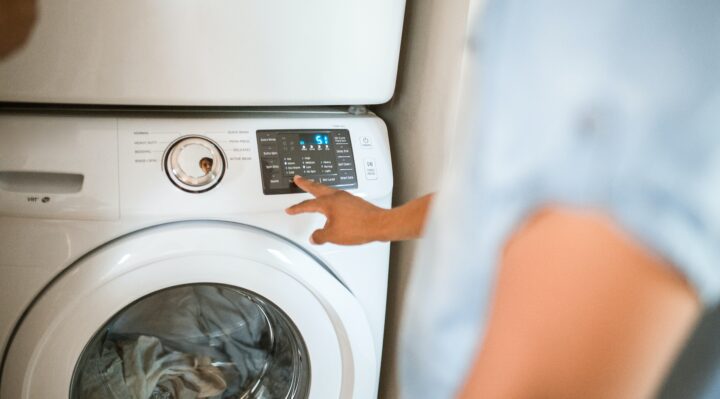If you’re in the market for a new washing machine, you’ve probably come across the term “washing machine power rating”. But what does it really mean? In this guide, we’ll help you in understanding washing machine power rating, including how it’s measured in watts and kilowatts, and what the average rating is for most machines.

Table of Contents
Step 1: Understanding Washing Machine Power Rating
Firstly, it’s essential to know what the washing machine power rating refers to. It’s a measure of the maximum power that a washing machine can consume during its operation. This rating is usually stated in watts (W) or kilowatts (kW), where 1 kW equals 1,000 watts. The power rating plays a crucial role in determining the energy efficiency and operational cost of your washing machine.
Step 2: Washing Machine Power Rating in Watts
The power rating of a washing machine in watts is generally mentioned on the energy label or in the product specifications. To locate this information, check the back or side of your washing machine for the energy label. It’s usually a sticker that provides information about the appliance’s energy efficiency, power consumption, and other related data. The power rating should be listed in watts (W).
Step 3: Washing Machine Power Rating in kW
Some manufacturers may list the washing machine power rating in kilowatts. As mentioned earlier, 1 kW equals 1,000 watts. Therefore, to convert watts to kilowatts, simply divide the number of watts by 1,000. For instance, if your washing machine has a power rating of 2,200 watts, its power rating in kW would be 2.2 kW.
For more articles on washer efficiency, click here: Washing Machine Efficiency: Comprehensive Guide to Saving Energy
Step 4: Understanding Average Washing Machine Power Rating
The average power rating for most washing machines falls in the range of 500 to 1,500 watts, depending on the model and the washing cycle chosen. It’s important to remember that the power rating indicates the maximum power the machine can use, but not all cycles will require the maximum power. For example, an eco-friendly cycle or a low-temperature wash might use less power.
Step 5: Considering Energy Efficiency
The washing machine power rating is a crucial factor in its energy efficiency. Machines with a lower power rating are usually more energy-efficient, resulting in lower electricity costs. Moreover, many modern washing machines come with energy-saving features, such as eco-friendly cycles or automatic load detection, which adjust the power consumption based on the size of the laundry load.